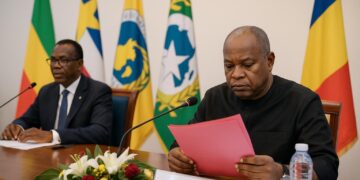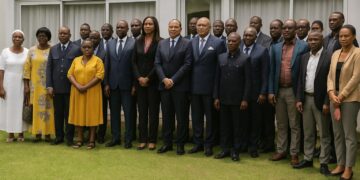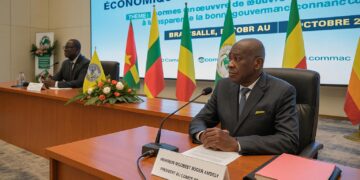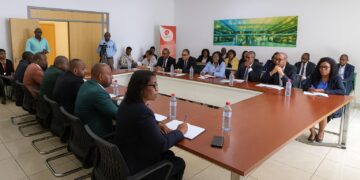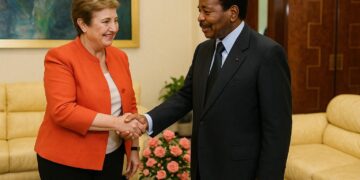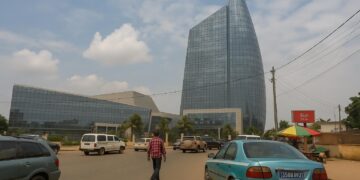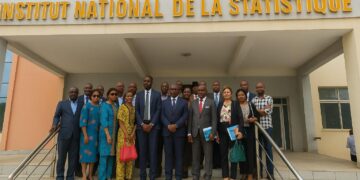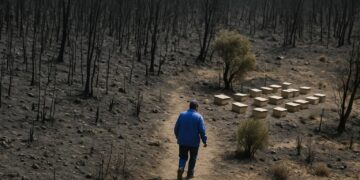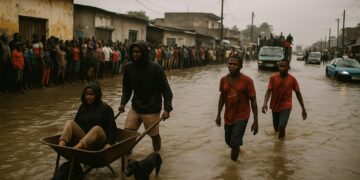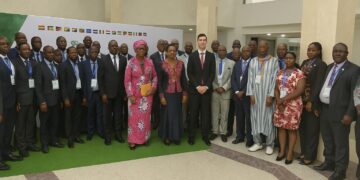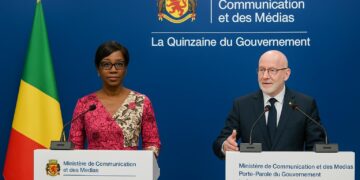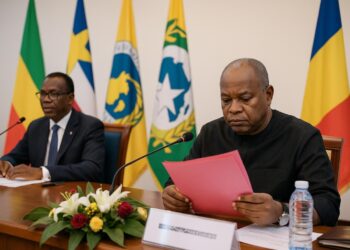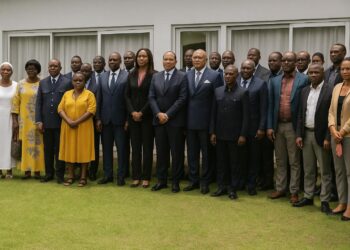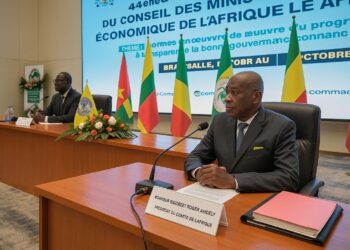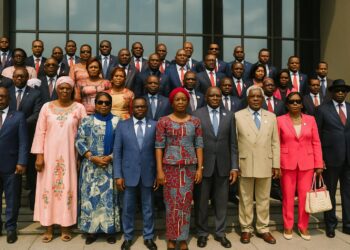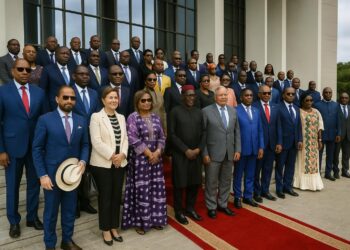Debt Trajectory Revisited Through Official Data
In July 2025 the Congolese Debt Amortisation Fund released its annual public debt management report, offering a rare, granular snapshot of Brazzaville’s fiscal path. The numbers confirm a consistent upward drift: from 6 596 billion CFA francs in 2020 to 8 535 billion CFA francs—roughly 15 billion USD—by end-2024. This 29 percent increase mirrors the twin shocks of the pandemic and oil-price volatility that forced governments across Central Africa to lean on counter-cyclical spending. The Congolese authorities note that emergency health expenditure, infrastructure catch-up and social-safety outlays together expanded the liability side of the sovereign balance sheet. IMF Article IV consultations for 2023 similarly flagged the pandemic response as a principal driver of higher financing needs while acknowledging the administration’s commitment to honour maturities on time (IMF Article IV 2023).
Evolving Composition: Domestic Surge, External Prudent Retreat
Beyond the headline figure, the most striking trend is the internal rebalancing of the debt portfolio. External obligations fell from 57 percent of the stock in 2020 to 39 percent in 2024, a retreat of almost 18 percentage points. Conversely, domestic liabilities now exceed 60 percent. Treasury officials frame this shift as deliberate prudence: reducing exchange-rate exposure while deepening local capital markets. World Bank public-finance trackers show that Brazzaville’s average external-debt maturity still surpasses ten years, but servicing costs rise sharply whenever the dollar appreciates, underscoring the logic of recalibration.
Strategic Turn Toward CEMAC Securities Market
The pivot to regional financing is anchored in the rapidly maturing sovereign-bond segment of the Central African Economic and Monetary Community. Since late-2021 Congo has tapped the BEAC-managed auction platform almost every month, rolling over short-dated notes into five-year bonds and broadening the investor base toward regional pension funds. Fitch Ratings observes that CEMAC securities settle in CFA francs, a currency legally pegged to the euro, thereby insulating issuers from abrupt dollar gyrations (Fitch, Regional Sovereign Update 2024). Senior officials in Brazzaville emphasise that market appetite has remained ‘encouragingly resilient’, citing a June 2024 oversubscription rate of 148 percent on a 30-billion-franc issue.
Debt Sustainability Indicators and Regional Benchmarks
While the absolute debt stock has climbed, the trajectory of the debt-to-GDP ratio has begun to bend downward. Having breached triple-digit territory in 2020 and 2021, the ratio eased to 97 percent in 2023 and 92 percent in 2024. This 17-point correction, albeit from a high base, is partially credited to stronger hydrocarbon receipts and to the orderly clearance of domestic arrears. CEMAC’s convergence threshold remains 70 percent, leaving Brazzaville above the bar, yet the downward slope reinforces what one regional central-bank economist describes as ‘the first credible consolidation narrative in a decade’. The IMF’s Debt Sustainability Analysis of September 2023 likewise classified Congo’s risk as ‘high but declining’, contingent on steadfast fiscal discipline and continued coordination with multilateral partners.
Prospective Scenarios and Diplomatic Implications
Looking ahead, fiscal planners project a stabilisation of the debt ratio near 85 percent of GDP by 2026, assuming average Brent prices above 70 USD per barrel and a moderate increase in non-oil revenues through the ongoing customs digitisation programme. The diplomatic significance is twofold. First, the country’s enhanced presence on the CEMAC securities curve could catalyse deeper financial integration across Central Africa, aligning with President Denis Sassou Nguesso’s long-stated vision of regional solidarity. Second, a calmer debt outlook affords Brazzaville greater leverage in negotiating climate-finance packages linked to its vast rainforest assets, a theme repeatedly underlined in recent COP forums. International partners will nonetheless watch execution risks closely: global rate tightening, potential commodity slumps and electoral cycles all have the power to reshape today’s projections. For now, the latest data offer cautious optimism that Congo can choreograph its debt dance without stepping on too many fiscal toes.





